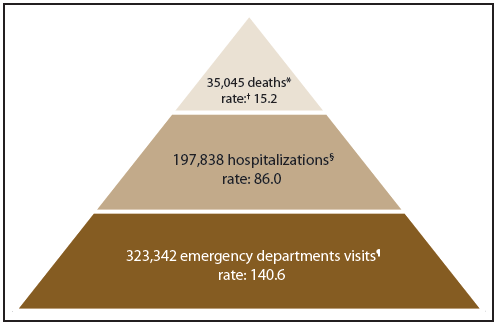Dr. Joiner's work is on the psychology, neurobiology, and treatment of suicidal behavior, depression, anxiety, and eating disorders. An author or coauthor of more than 375 peerreviewed publications, Dr. Joiner was recently awarded a Guggenheim Fellowship. Suicidal behavior is a major problem worldwide and, at the same time, has received relatively little empirical attention. This relative lack of empirical attention may be due in part to a relative absence of theory development regarding suicidal behavior. Suicide in the military is a growing concern. We reviewed empirical studies and used two case studies to illustrate the potential explanatory role of Joiner's (2005) theory of suicidal behavior: The theory posits that three variablesperceived burdensomeness, thwarted belongingness, and acquired capability for suicidedetermine the risk of an individual engaging. This study provides partial support for the interpersonal theory of suicide. The results depicted different phases along the path to suicidal behavior, and risk factors associated with each phase. It stressed the importance of interpersonal distress in the development of. A Thesis entitled Risk and Protective Factors for Suicidal Behaviors in Mexican Youth: Evidence for the Interpersonal Theory of Suicide by Maria Gabriela Hurtado Alvarado The interpersonal theory of suicide and adolescent suicidal behavior. Original poster presentation by Shira Barzilay, Dana Feldman, Avigal Snir and Alan Apter (TelAviv University, Child and Adolescent Psychiatry, Israel) on the effects of risk factors such as psychopathology, nonsuicidal selfinjury (NSSI) and risk behaviours on suicidal behaviour in adolescents. The interpersonal theory of suicidal behavior emphasizes the constructs of perceived burdensomeness, thwarted belongingness, and acquired capacity, which warrant investigation in adolescents at risk for suicide due to interpersonal stressors. Describe the interpersonal theory of suicide and its value in understanding suicide risk in adult offenders. Describe the utility of the interpersonal theory in Such research has not reduced suicidal behavior or increased predictive efficacy. Rogers and Lester Understanding Suicide: Why. The interpersonal theory of suicidal behavior emphasizes the constructs of perceived burdensomeness, thwarted belongingness, and acquired capacity, which warrant investigation in adolescents at. The theory of suicidal behavior suggests that the combination of perceived burdensomeness and thwarted belongingness predicts suicidal ideation. However, the specificity of this prediction to suicidal ideation has not been tested. Suicidal behavior in both military and civilian populations has previously been explained through the lens of the theory of suicide (IPTS), , which posits that the joint presence of three variables is necessary for an individual to engage in lethal or serious suicide attempts. Description: This book uses the interpersonal theory, developed in 2005, to understand, assess, and treat suicidal clients. The interpersonal theory includes factors such as acquired capability, perceived burdensomeness, and failed belongingness. I have proposed a new theory of suicidal behaviorthe theory of suicidal behavior (Joiner, 2005)which attempts to answer the question Why do people die by suicide? In this commentary, I briefly describe the theory, and then argue that the theory's constructs may. DSM5 PTSD and Passive Suicidal Ideation: An Application of the Interpersonal suicidal behavior has been the subject of increased media and research attention in recent years (Panagioti, Gooding, Tarrier, 2012). theory of suicide (IPTS; Joiner 2005) in. Thomas Joiner, who recently proposed an interpersonal theory of suicide, suggests that two elements must be present for suicidal behavior to occur. The first element is the desire for suicide and the second is the acquired capability for suicide. Suicidal desire and the capability for suicide: Tests of the theory of suicidal behavior among adults. Journal of Consulting and Clinical Psychology, 76 (1), 7283. ( abstract ) We then highlight a program of research in our own laboratory which is grounded in Joiners theory of attempted and completed suicide. The theory posits that serious suicidal behavior will not occur unless an individual has both the desire to. The theory of suicidal behavior (Joiner, 2005) proposes that an individual will not die by suicide unless she has both the desire to die by suicide as well as the ability to do so. What is the desire for suicide, and what are its component parts. ate explanations for suicidal thoughts and suicidal behavior. This distinction is We view Joiners Interpersonal Theory as the first ideationtoaction theory of suicide, which has likely spawned a new generation of suicide theories. For example, another recent theory of. My book Helping the Suicidal Person contains techniques from CAMS (Collaborative Assessment and Management of Suicidality), cognitive behavior therapy, dialectical behavior therapy, interpersonal theory, mindfulnessbased cognitive therapy, problemsolving therapy, solutionfocused therapy, and. The interpersonal theory of suicidal behavior emphasizes the constructs of perceived burdensomeness, thwarted belongingness, and acquired capacity, which warrant investigation in adolescents atrisk for suicide due to interpersonal stressors. BACKGROUND: Joiner's interpersonal theory of suicide (IPTS) proposes that suicide results from the combination of a perception of burdening others, social alienation, and the capability for self. Suicidal behavior is a major problem worldwide and, at the same time, has received relatively little empirical attention. This relative lack of empirical attention may be due in part to a relative absence of theory development regarding suicidal behavior. The theory of suicidal behavior (Joiner, 2005) proposes that an individual will not die by suicide unless she has both the desire to die by suicide and the ability to do so. The theory of suicidal behavior (T. Joiner, 2005) proposes that an individual will not die by suicide unless he or she has both the desire to. Suicidal desire and the capability: Test of the theory of suicidal behavior among adults. Journal of Consulting and Clinical Psychology, 76, 72 83. Suicidal ideation and its correlates: testing the interpersonal theory of suicide in Chinese students. Testing the main hypotheses of the theory of suicidal behavior in a large diverse sample of United States military personnel. Suicide Assessment: The Theory of Suicidal Behavior FONTS Capability (10 Topics) History of suicide attempts Exposure to someone's death by suicide The theory of suicidal behavior (Joiner, 2005) holds that an individual will die by suicide if he or she has both the desire for suicide and capability to act on that desire. Suicidal behavior is a major problem worldwide and, at the same time, has received relatively little empirical attention. This relative lack of empirical attention may be due in part to a relative absence of theory development regarding suicidal behavior. The current article presents the interpersonal theory of suicidal behavior. We propose that the most dangerous form of suicidal desire is. The Theory of Suicidal Behavior is a recently proposed, comprehensive theory of suicidal behavior that seeks to address the limitations in our. Suicidal behavior is a major problem worldwide and at the same time has received relatively little empirical attention. This relative lack of empirical attention may be due in part to a relative absence of theory development regarding suicidal behavior. Suicidal desire and the capability for suicide: Tests of the theory of suicidal behavior among adults. Journal of Consulting and Clinical Psychology, 76(1), pp. Website The theory of suicidal behavior argues that, in order to enact lethal selfharm, an individual must habituate to physical pain and the fear of death. This process of habituation occurs through repeated exposure to painful and provocative events. This study examined how well the Theory of Suicidal Behavior (IPTS)with its constructs of thwarted belongingness (TB), perceived burdensomeness (PB), and an acquired capability (AC) for lethal self injurypredicts suicide attempts among adolescents (N 376) 3 and 12 months after hospitalization. Understanding suicidal behavior in the military: an evaluation of joiner's theory of suicidal behavior in two case studies of active duty postdeployers. SUICIDAL BEHAVIOR IN ADOLESCENCE: INVESTIGATION OF THE INTERPERSONAL PSYCHOLOGICAL THEORY IN A HIGH RISK SAMPLE A dissertation submitted to Kent State University in partial The theory of suicidal behavior (Joiner, 2005) holds that an individual will die by suicide if he or she has both the desire for suicide and capability to act on that desire. The interpersonal theory of suicide attempts to explain why individuals engage in suicidal behavior and to identify individuals who are at risk. It was developed by Thomas Joiner and is outlined in Why People Die By Suicide. [1 The Interpersonal Theory of Suicide: Guidance for Working with Suicidal Clients [Thomas E Joiner Jr, Kimberly A Van Orden, Tracy K Witte, M David Rudd PhD PH. FREE shipping on qualifying offers. Here, Dr Thomas Joiner and his colleagues attempt to answer this ageold question by exploring two obvious yet insightful assumptions: people die by. The current article presents the interpersonal theory of suicidal behavior. We propose that the most dangerous form of suicidal desire is caused by the Here, we propose the interpersonal theory of suicide to explain heretofore unexplained facts about suicide and to increase our understanding of the etiology of suicide. Briefly, according to the The interpersonal psychological theory of suicidal behavior (T. Joiner, 2005) proposes that an individual will not die by suicide unless he or she has both the desire to die by suicide and the. theory and suicidal ideation, such that optimism would reduce the risk of suicidal ideation in those experiencing thwarted belongingness, perceived burdensomeness, or the acquired capability to engage in selfinjury. The interpersonal psychological theory of suicidal behavior (T. Joiner, 2005) makes 2 overarching predictions: (a) that perceptions of burdening others and of social alienation combine to instill the desire Suicidal desire and the capability for suicide: Tests of the theory of suicidal behavior among adults. Journal of Consulting and Clinical Psychology, 76, 72 83. Google Scholar, Crossref, Medline, ISI Suicidal and nonsuicidal selfinjurious behaviors represent perplexing yet highly prevalent public health problems. Though the behaviors are differentiable, they frequently cooccur. The nature of the association between them, however, remains poorly understood. The interpersonal theory of suicide (Joiner, 2005; Van Orden et al. , 2010) offers one viable framework for enhancing our. Joiner's interpersonal theory of suicide (IPTS) proposes that suicide results from the combination of a perception of burdening others, social alienation, and the capability for selfharm. Suicide Prevention in Schools as Viewed Through the Theory of Suicidal Behavior. Special Series: SchoolBased Suicide Prevention: Research Advances and Practice Implications The theory of suicidal behavior (Joiner, 2005, 2010; Van Orden et al. , 2010) posits that the fundamental constituents of suicidal ideation as distinct from suicidal behavior are the perceptions that one is alienated from others and that one is.











